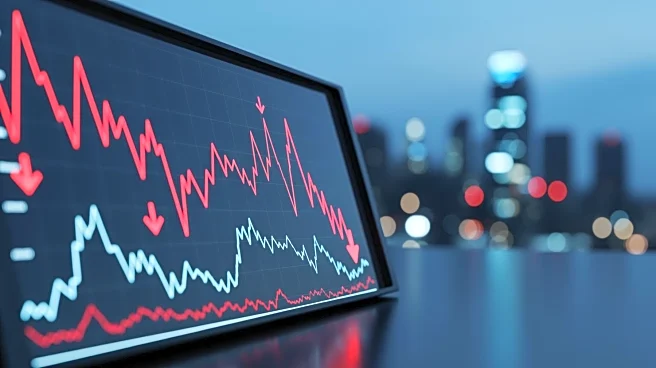What's Happening?
Investor enthusiasm for stocks has reached a fever pitch, as indicated by the Citigroup Panic/Euphoria Model, now known as the Levkovich Index. This index is signaling a potentially challenging period ahead for the market, with a recent reading of 0.79,
nearly double the 'euphoria' threshold of 0.41. The index measures investor sentiment through various metrics, including short interest, margin debt, and sentiment surveys. Historically, a reading below panic suggests a high likelihood of stock price increases over the following year, while euphoria levels indicate a strong probability of stock price declines. Despite recent market volatility due to a government shutdown, the S&P 500 has risen by 14% in 2025, and Wall Street strategists are optimistic about future gains.
Why It's Important?
The current investor sentiment, as measured by the Levkovich Index, suggests that the market may be approaching a peak, with potential implications for stock prices in the coming year. High levels of euphoria often precede market corrections, which could impact investors and financial markets significantly. While some strategists remain bullish, predicting further gains for the S&P 500, others are cautious, noting that the American Association of Individual Investors survey shows a bearish sentiment advantage. The situation highlights the importance of monitoring investor sentiment as a contrarian indicator for market trends.
What's Next?
As investor sentiment remains high, market analysts and strategists will continue to monitor the Levkovich Index and other indicators for signs of potential market corrections. Wall Street forecasts for the S&P 500 suggest continued growth, but the disparity in sentiment surveys indicates that caution may be warranted. Investors and financial institutions will need to consider these indicators when making investment decisions, balancing optimism with the potential risks of a market downturn.
Beyond the Headlines
The current market sentiment raises questions about the sustainability of stock price increases and the potential for a market correction. The ethical considerations of investor behavior and market predictions also come into play, as financial institutions and analysts must navigate the fine line between encouraging investment and warning of potential risks. The long-term implications of sustained euphoria levels could lead to increased market volatility and impact economic stability.














